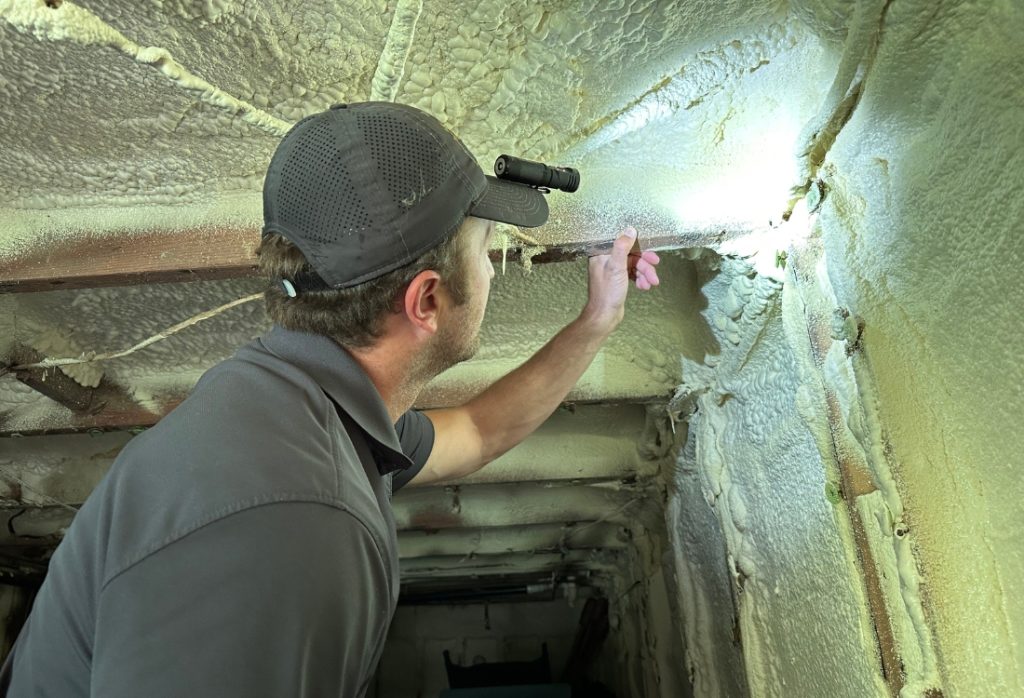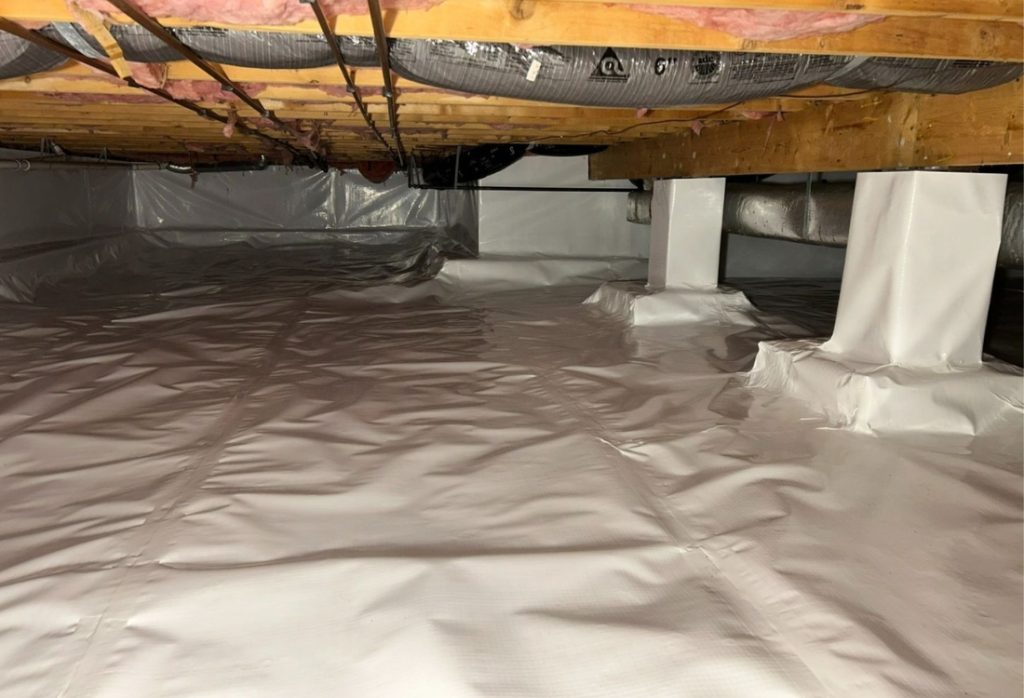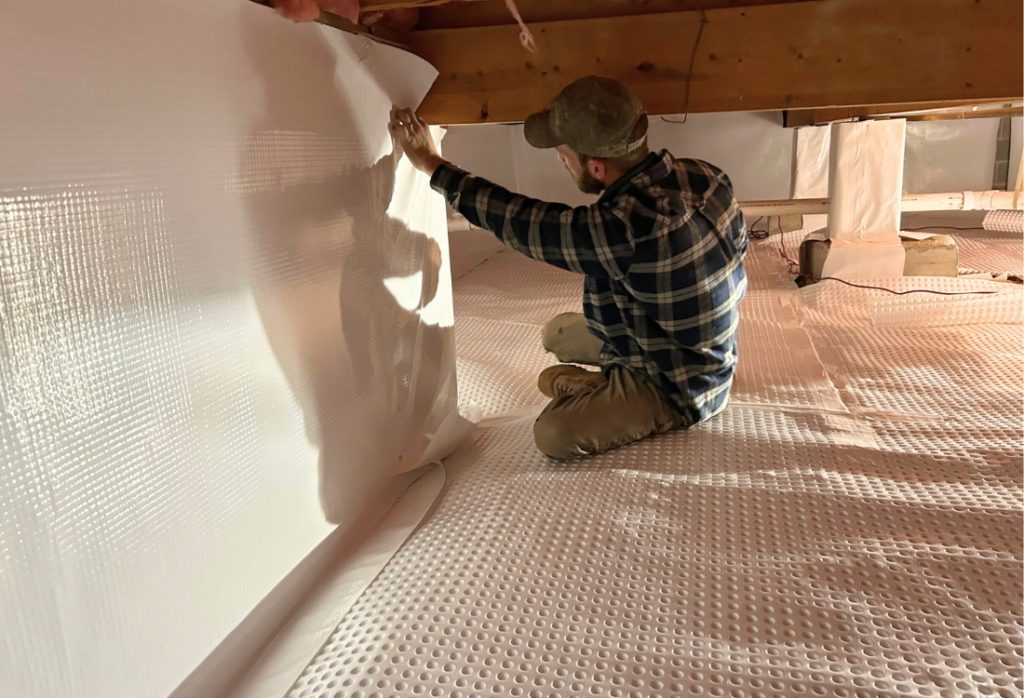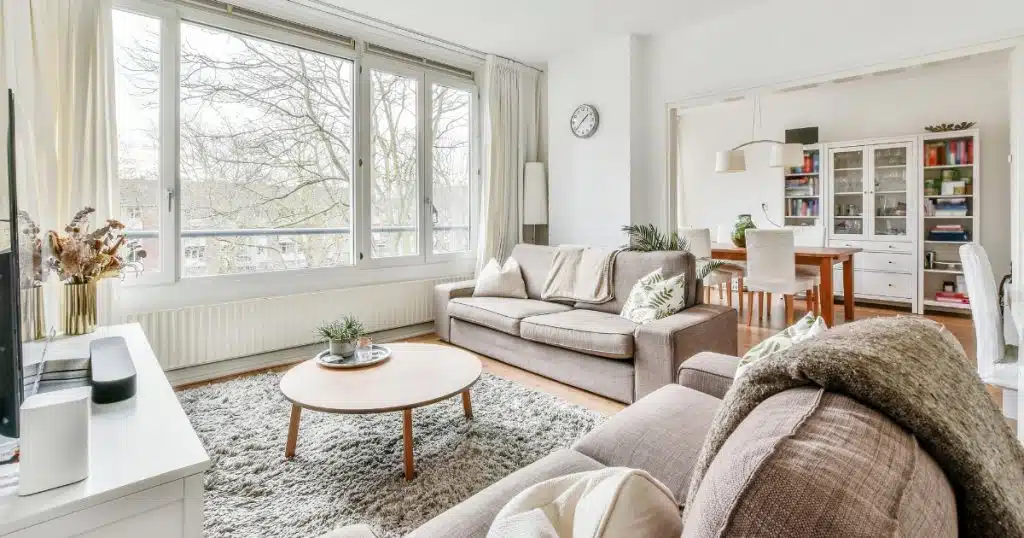Published: September 8, 2023 • Updated: September 29, 2025
Crawl space encapsulation cost is one of the most common concerns for Virginia homeowners planning this project. While the average ranges from $2 to $16 per square foot, the actual price depends on many factors, including the size of the space, its current condition, and the materials used.
Instead of relying on broad estimates, it’s smarter to understand what drives crawl space encapsulation cost so you can budget accurately and make informed decisions.
In this guide, we’ll break down the key factors, when to encapsulate, ways to save, and why a professional inspection matters most.
Average Cost of Crawl Space Encapsulation
Crawl space encapsulation cost can vary significantly depending on the scope of work and your home’s needs. Based on the solutions provided by LUX Foundation Solutions, Virginia homeowners can generally expect to invest the following per square foot of crawl space floor:
- Basic ground cover: $2– $4
- Sealed, code-minimum (no dehumidifier): $4.25–$5.25
- Full encapsulation (R-10/13 insulated walls + dehumidifier): $5.50–$7.50
- Premium system (includes drainage, sump pump, and mold cleaning): $12–$16+
Projects that require heavy remediation or structural repairs may escalate, aligning with national averages of $5,000–$15,000 and sometimes $20,000+ for complex cases.
Key Factors That Influence Crawl Space Encapsulation Cost

The crawl space encapsulation cost isn’t one-size-fits-all. Every home has unique conditions that determine the amount of labor, materials, and preparation required.
Here are the main factors that Virginia homeowners should consider:
Size of the Crawl Space
If you have larger crawl spaces, they require more materials (vapor barrier, insulation, tape, sealants) and labor.
- Square footage is the biggest driver of cost.
- Height matters too: a crawlspace with 2 feet of clearance requires more effort to maneuver than one with 4 feet of clearance.
Current Condition of the Crawl Space
If your crawlspace already has issues, costs may increase.
- Mold growth → remediation needed before sealing.
- Wood rot → structural repairs to joists or beams.
- Pests → extermination may be required.
For more information on remediation, see our detailed post on crawl space mold removal.
Access & Installation Complexity
Tight or hard-to-reach crawl spaces require additional labor hours. The more complex the installation (due to obstacles, ductwork, or limited entry points), the higher the cost.
Waterproofing & Drainage Needs
If you regularly have standing water in the crawl space, additional waterproofing may be required. Installing a sump pump, French drain, or other drainage solutions will increase upfront costs.
Materials & Vapor Barrier Quality
Not all vapor barriers are created equal.
- Thin 6-mil plastic is cheaper, but rips easily and fails early.
- Class 1 vapor barrier (12–20 mil) is more durable, long-term protection.
Insulation type also affects cost: rigid foam is pricier than fiberglass but performs better in Virginia’s humid and cold climate.
Additional Systems
Some crawlspaces need more than just a vapor barrier. Each adds value and protection, but also increases cost may include:
- Dehumidifier – keeps humidity below 50%.
- Sump pump – prevents standing water.
- Vent sealing – blocks outside air from entering.
- New access door – improves entry and security.
Local Codes, Permits & Inspections
In Virginia, some counties require permits for crawlspace work. Costs vary but often include both the permit fee and an inspection after completion.For a more comprehensive understanding of the permitting process, you can refer to “Navigating Home Improvement Permits: A Beginner’s Guide.”
Why Crawl Space Encapsulation Is Worth the Cost

Once you understand the cost factors, the next question is: Is it worth the money?
The answer is yes — because encapsulation protects more than just your crawlspace.
- Prevents structural damage – Moisture leads to wood rot, mold, and foundation cracks. Encapsulation stops the cycle.
- Improves indoor air quality – Up to 50% of the air in your home comes from the crawlspace. Keeping it clean means healthier air.
- Reduces energy bills – A conditioned crawlspace reduces drafts in winter and heat buildup in summer. According to the U.S. Department of Energy, sealing and insulating can cut heating and cooling costs by up to 20%.
- Adds resale value – Buyers view encapsulation as proof of a well-maintained, energy-efficient home.
Want to learn more about the process itself? Check out our guide on crawl space encapsulation.
When Should I Hire Crawl Space Experts?

While DIY crawl space encapsulation may seem cost-effective, it often leads to problems such as poorly sealed vapor barriers, persistent moisture, or unaddressed drainage needs. These mistakes can reduce the system’s lifespan and lead to costly repairs.
Hiring professional crawlspace experts ensures proper installation, code compliance, and warranty protection—saving you money in the long run while maintaining a safe foundation and indoor air quality.For a step-by-step overview, visit our crawl space encapsulation solutions.
How to Save on Crawl Space Encapsulation Costs

Crawlspace encapsulation is a smart investment, but homeowners often wonder how to keep expenses manageable. While you shouldn’t cut corners on quality, there are practical ways to reduce the overall crawl space encapsulation cost without sacrificing long-term protection.
- Schedule regular inspections and maintenance to extend system life.
- Obtain multiple estimates from different contractors before making a decision.
- Address structural issues or water damage early to avoid costly repairs later.
- Select high-quality materials upfront for long-term savings.
- Schedule regular inspections and maintenance to extend system life.
Protect Your Virginia Home with Crawl Space Encapsulation
Don’t let moisture, mold, or pests damage your home’s foundation or air quality. At LUX Foundation Solutions, we specialize in crawlspace encapsulation for Northern Virginia, the Shenandoah Valley, West Virginia, and the North Central Virginia region.Call 540-508-8587 to schedule your free crawlspace assessment and estimate today. Our team will evaluate your space, explain your options, and provide you with peace of mind through a long-lasting solution.
Commonly Asked Questions
What is the average crawl space encapsulation cost?
The cost of crawl space encapsulation varies based on factors such as size, materials, and condition. On average, Virginia homeowners invest between $4,000 and $15,000, with premium or complex projects reaching $ 20,000 or more.
How much does crawl space encapsulation cost on 1000 sq ft?
The average cost of installing a crawlspace encapsulation system ranges from $2 to $16 per square foot. For a 1,000-square-foot crawl space, the cost can range from $2,000 on the low end for ground cover to $16,000+ for a premium system with drainage, sump pump, and mold remediation.
The final price depends on factors such as the size of the area, which requires more materials and labor cost, the quality of materials used, particularly the vapor barrier, and whether any additional crawlspace repairs are required.
Does an encapsulated crawl space need a dehumidifier?
Yes, in many cases, an encapsulated crawlspace benefits from a dehumidifier. A dehumidifier helps control moisture levels and prevents the buildup of humidity, which can lead to mold growth and other issues. It ensures a dry and healthy environment in your home.
Is crawl space encapsulation really necessary?
Yes, it is highly recommended, especially if your crawlspace experiences issues like moisture problems, pest infestations, or structural concerns. It helps improve indoor air quality and energy efficiency and prevents potential problems, making it a worthwhile investment for many homeowners.
How long does crawl space encapsulation last?
When properly installed and maintained, an encapsulated crawlspace can last for 15 to 20 years. With routine inspections and necessary crawl space repair, it can provide long-term benefits to your home’s structural integrity and indoor environment.
Does encapsulating a crawl space increase home value?
Yes, encapsulating a crawlspace can increase the value of your home. It not only improves the structural integrity of your property but also enhances indoor air quality, making it more attractive to potential buyers. A well-encapsulated crawlspace is often seen as a valuable asset in the real estate market.
Is crawl space encapsulation worth the cost?
Yes, it is worth the investment if you’re dealing with moisture issues, pest problems, or other crawlspace-related concerns. It can also lead to long-term energy savings and improved indoor comfort, making it a valuable addition to your home. However, it’s essential to weigh the costs to encapsulate the area against the benefits and consult with professionals for an informed decision.
